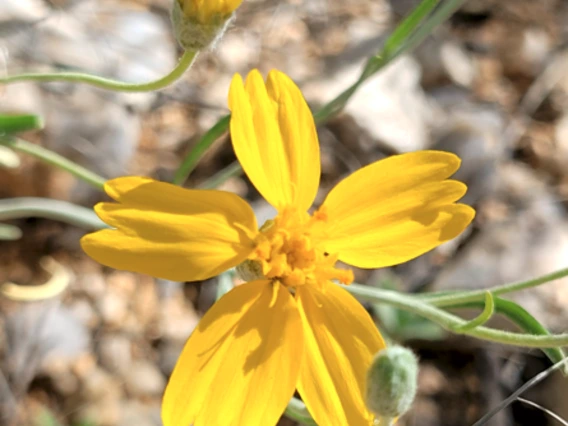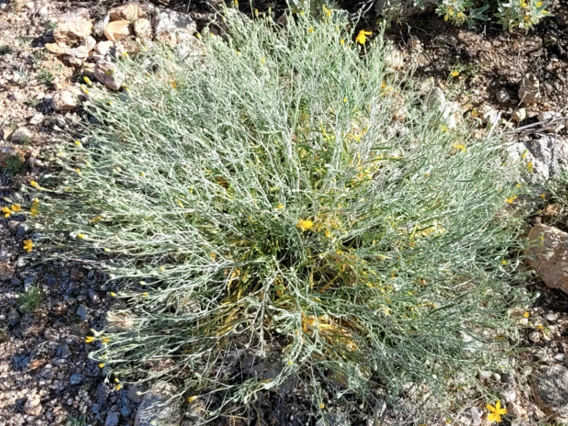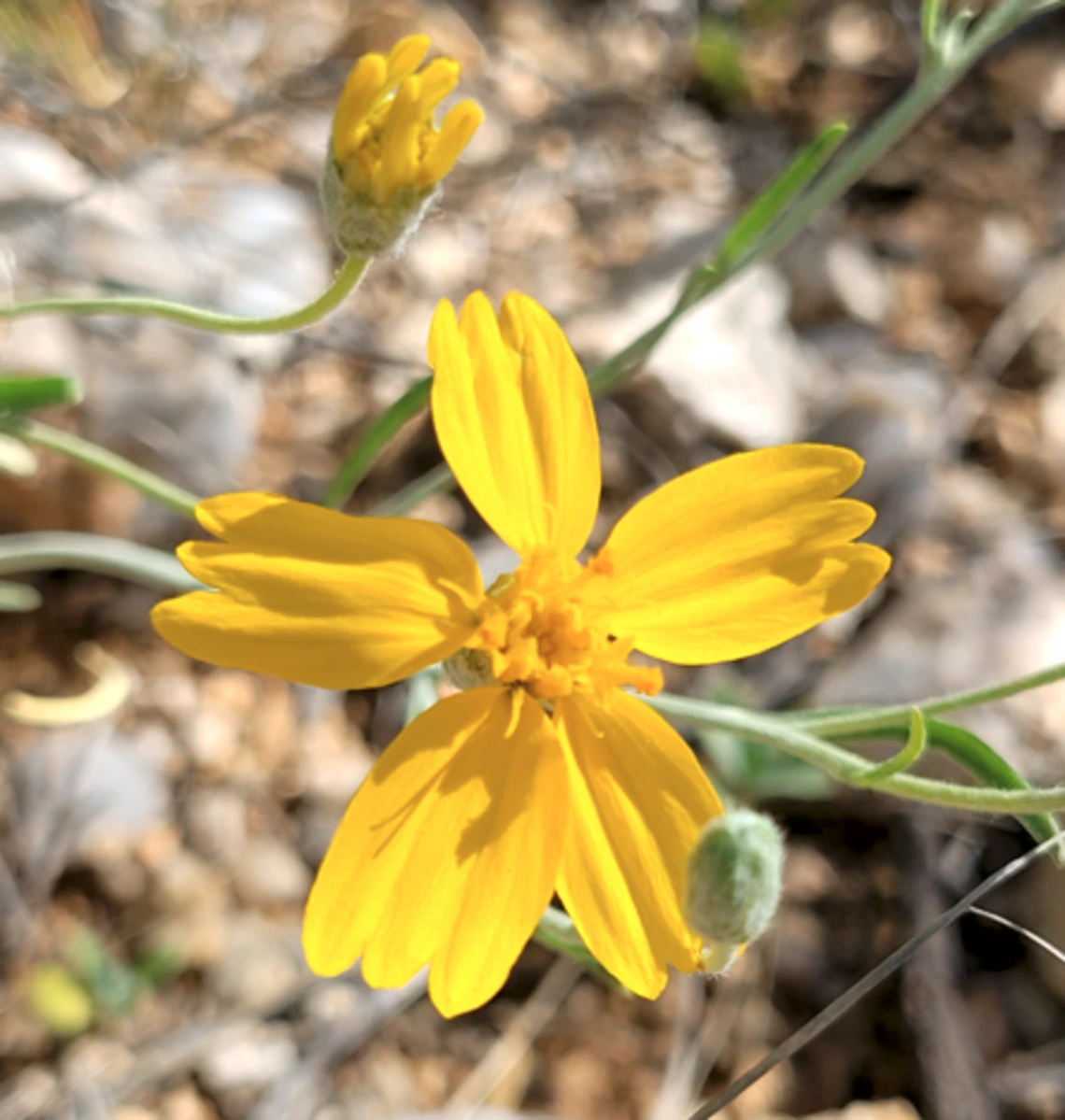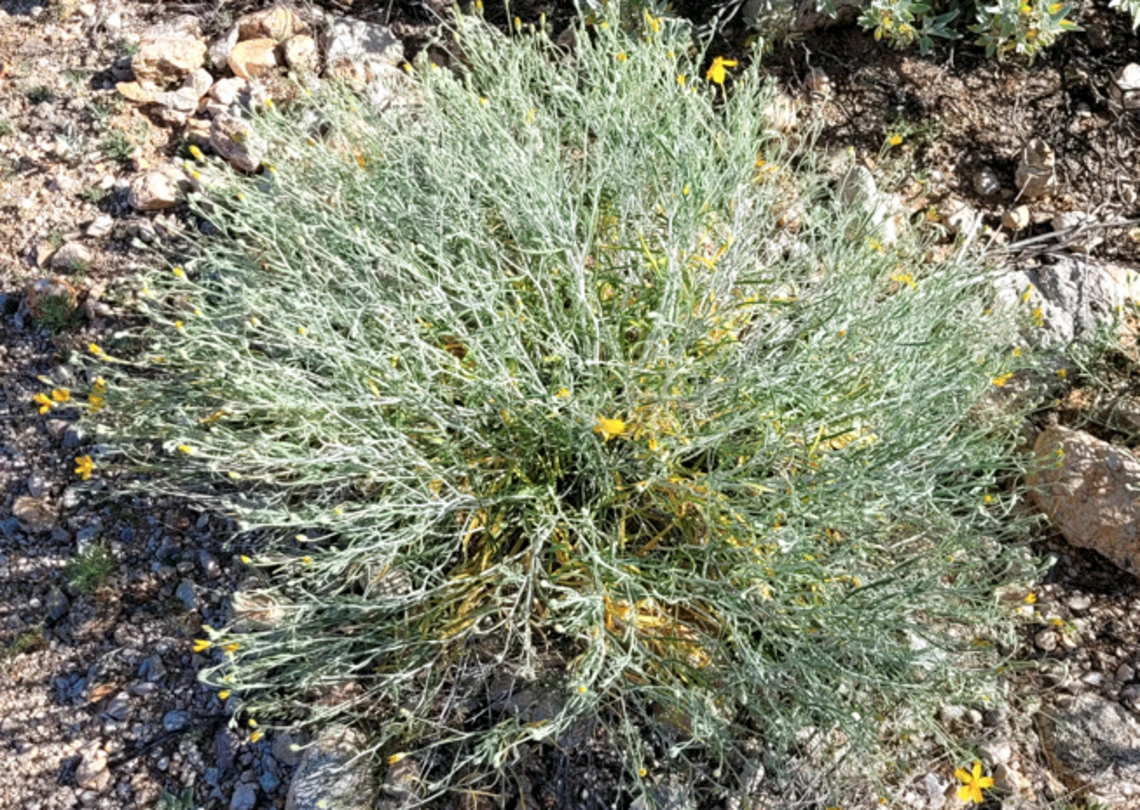Family: Asteraceae
Compound: Psi coo
Synonyms: Riddellia cooperi
Geographic Origin: southwestern US, northern MX
Characteristics: Small, densely branched, perennial shrub that typically grows up to 0.6m (2ft) tall. The base of the plant is woody, though the upper stems are not. Stems are thin and whitish in color. Leaves are narrow and linear, up to 7.6cm (3in) long, and covered with fine hairs, giving them a whitish-green appearance. The plant blooms profusely from late spring to early fall when water is abundant. Flowers are yellow, and daisy-like. These flowers are distinctive for their long-lasting, papery ligules that remain on the plant, creating a prolonged display of color even after the flowering period has ended.
Natural History: Found in sandy or gravelly soils along desert washes, on bajadas, and on rocky slopes from 609-1524m (2,000-5,000ft)
Cultivation Notes: Highly drought-tolerant and well-suited for xeric landscaping. It prefers full sun and well-drained soils. Minimal watering is needed once the plant is established, making it an excellent choice for water-efficient gardens, though additional water may be helpful for maintaining healthy appearance during dry periods. The plant can be propagated from seed or by dividing clumps. It requires little maintenance, other than optional occasional pruning to maintain its shape and promote denser growth.
For general plant propagation information, click here
Ethnobotany: Medicinal or culinary uses are unknown, but this plant is valued in ornamental horticulture for its drought tolerance and the long-lasting visual interest provided by its bracts. It is often used in rock gardens, native plant landscapes, and roadside plantings. Psilostrophe spp. are known to be toxic to livestock.
Citations:
Arizona-Sonora Desert Museum. Retrieved April 30, 2024.
Southwest Desert Flora. Retrieved April 30, 2024.
SEINet Arizona – New Mexico Chapter. Retrieved April 30, 2024.





